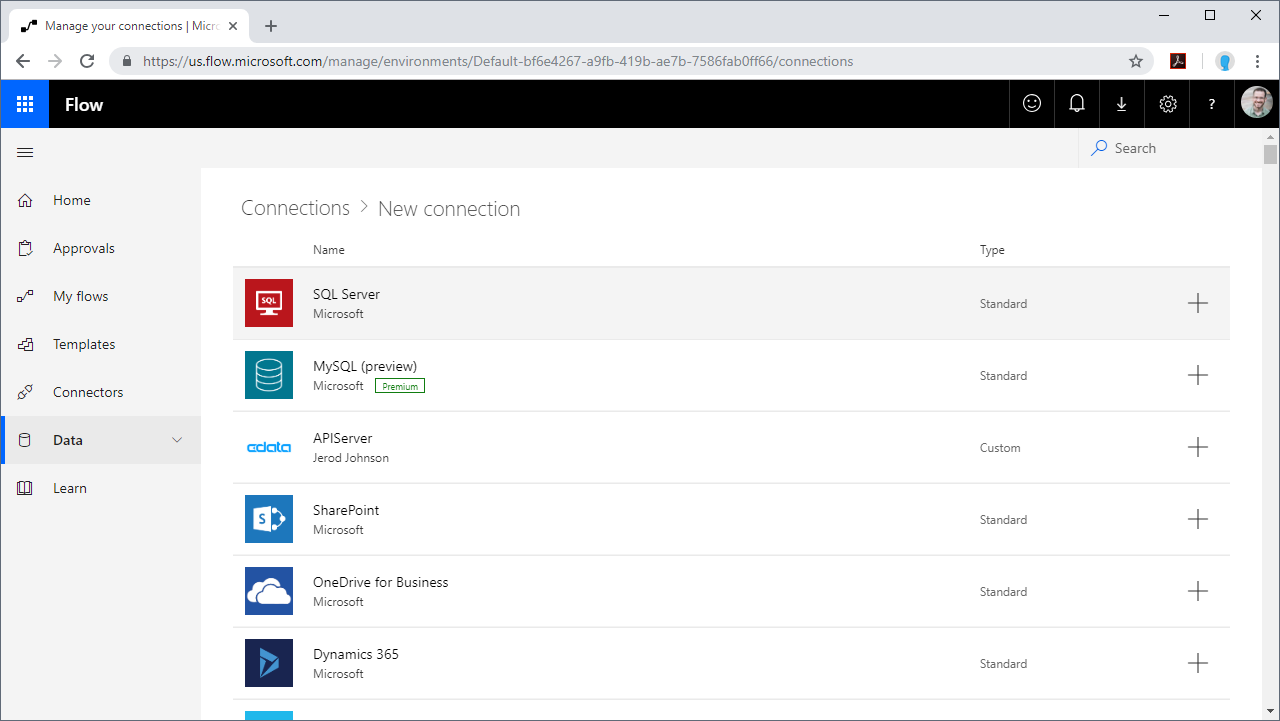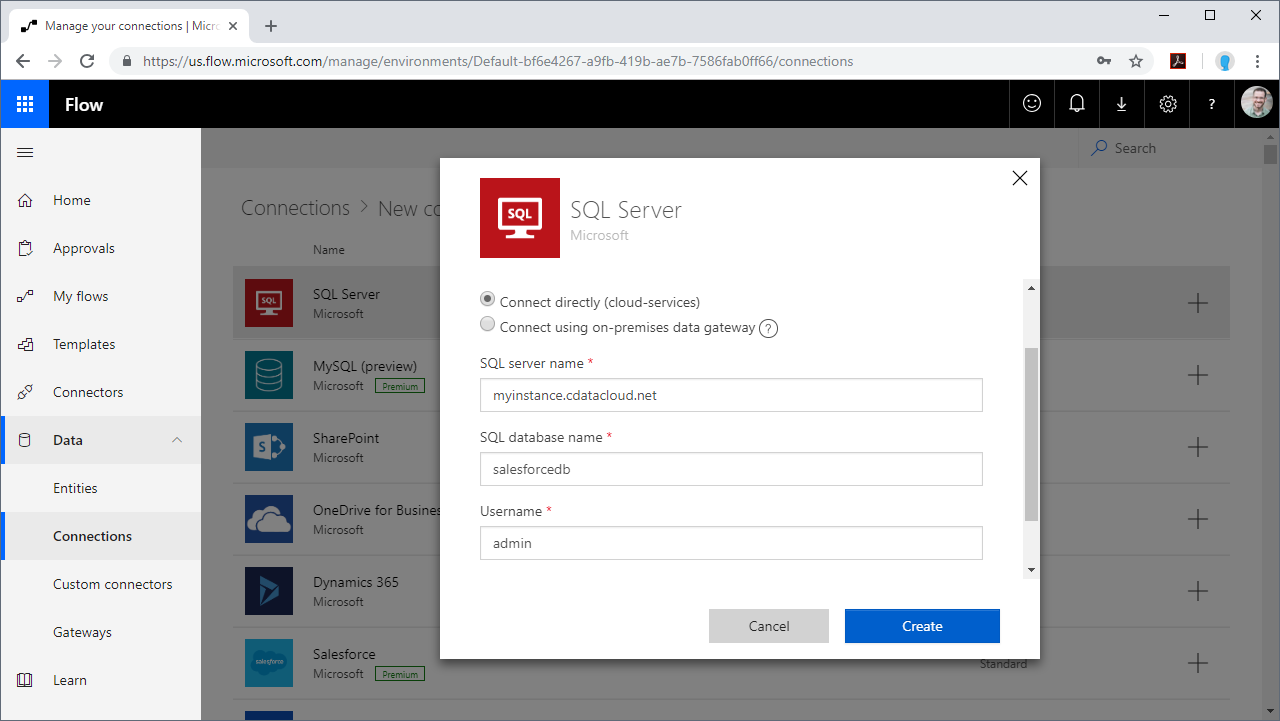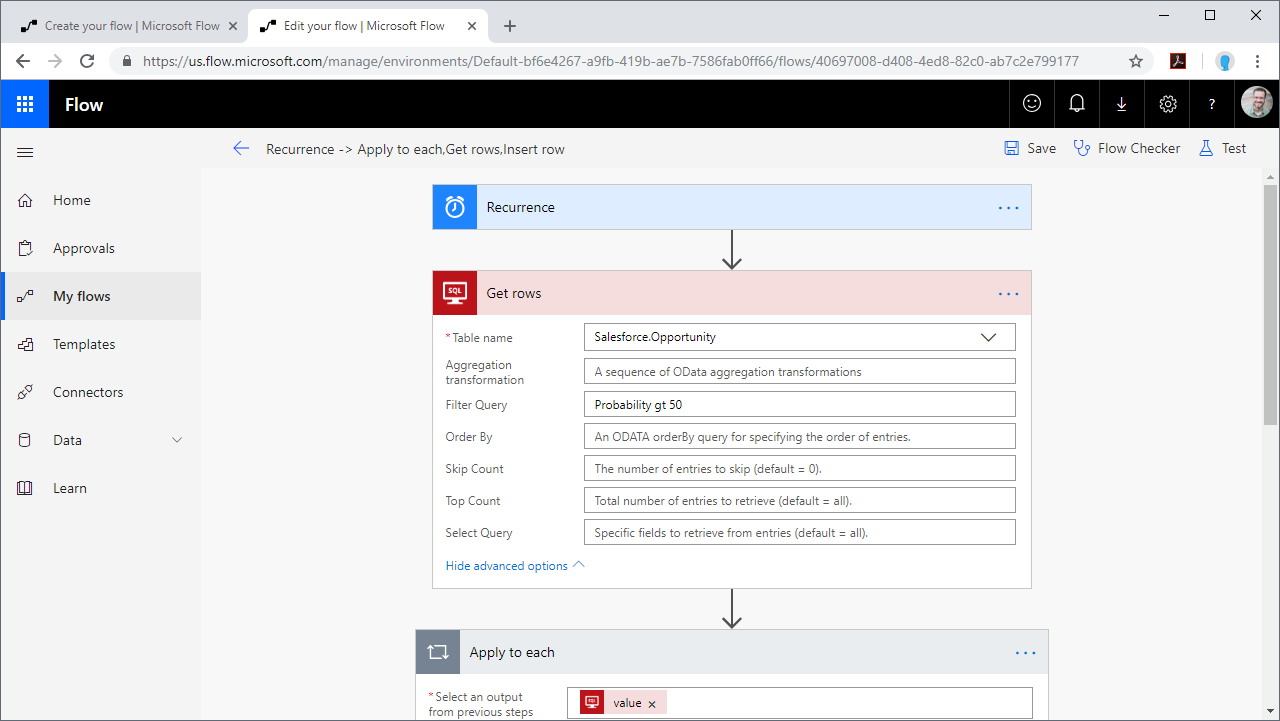Discover how a bimodal integration strategy can address the major data management challenges facing your organization today.
Get the Report →Integrate SQL Analysis Services Data into Automated Tasks with Power Automate
Use CData Connect Server to create a virtual SQL Server database for SQL Analysis Services data and integrate live SQL Analysis Services data into your Power Automate (Microsoft Flow) tasks.
Power Automate (Microsoft Flow) is an online service that automates events (known as workflows) across the most common apps and services. When paired with CData Connect Server, you get instant, cloud-to-cloud access to SQL Analysis Services data for visualizations, dashboards, and more. This article shows how to connect to Connect Server from Power Automate and integrate live SQL Analysis Services data into your workflows and tasks.
CData Connect Server provides a pure SQL interface for SQL Analysis Services, allowing you to easily integrate with live SQL Analysis Services data in Power Automate — without replicating the data. CData Connect Server looks exactly like a SQL Server database to Power Automate and uses optimized data processing out of the box to push all supported SQL operations (filters, JOINs, etc) directly to SQL Analysis Services, leveraging server-side processing to quickly return SQL Analysis Services data.
Create a Virtual SQL Database for SQL Analysis Services Data
CData Connect Server uses a straightforward, point-and-click interface to connect to data sources and generate APIs.
- Login to Connect Server and click Connections.
![Adding a connection]()
- Select "SQL Analysis Services" from Available Data Sources.
-
Enter the necessary authentication properties to connect to SQL Analysis Services.
To connect, provide authentication and set the Url property to a valid SQL Server Analysis Services endpoint. You can connect to SQL Server Analysis Services instances hosted over HTTP with XMLA access. See the Microsoft documentation to configure HTTP access to SQL Server Analysis Services.
To secure connections and authenticate, set the corresponding connection properties, below. The data provider supports the major authentication schemes, including HTTP and Windows, as well as SSL/TLS.
-
HTTP Authentication
Set AuthScheme to "Basic" or "Digest" and set User and Password. Specify other authentication values in CustomHeaders.
-
Windows (NTLM)
Set the Windows User and Password and set AuthScheme to "NTLM".
-
Kerberos and Kerberos Delegation
To authenticate with Kerberos, set AuthScheme to NEGOTIATE. To use Kerberos delegation, set AuthScheme to KERBEROSDELEGATION. If needed, provide the User, Password, and KerberosSPN. By default, the data provider attempts to communicate with the SPN at the specified Url.
-
SSL/TLS:
By default, the data provider attempts to negotiate SSL/TLS by checking the server's certificate against the system's trusted certificate store. To specify another certificate, see the SSLServerCert property for the available formats.
You can then access any cube as a relational table: When you connect the data provider retrieves SSAS metadata and dynamically updates the table schemas. Instead of retrieving metadata every connection, you can set the CacheLocation property to automatically cache to a simple file-based store.
See the Getting Started section of the CData documentation, under Retrieving Analysis Services Data, to execute SQL-92 queries to the cubes.
![Configuring a connection (SQL Server is shown).]()
-
HTTP Authentication
- Click Save Changes
- Click Privileges -> Add and add the new user (or an existing user) with the appropriate permissions.
Connecting to CData Connect Server
To use Connect Server to integrate SQL Analysis Services data into your Power Automate tasks, you need a new SQL Server connection:
- Log in to Power Automate
- Click Data -> Connections -> New connection
- Select SQL Server
![Creating a new SQL Server Connection]()
- In the connection wizard:
- Set Authentication Type to "SQL Server Authentication"
- Set SQL server name to the address of your Connect Server instance (connect_server_url)
- Set SQL database name to the name of the virtual SQL Analysis Services database you created earlier (like ssasdb)
- Set the Username and Password and click Create
![Connecting to Connect Server]()
Integrating SQL Analysis Services Data into Power Automate Tasks
With the connection to Connect Server configured, you are ready to integrate live SQL Analysis Services data into your Power Automate tasks.
- Log in to Power Automate
- Click My flows -> New and choose to create the flow from blank or template
- Add (or configure) a SQL Server action (like Get rows) and configure the action to connect to your Connect Server connection
- Select a Table to work with (from the drop-down menu) and configure any advanced options (like filters, orders, etc)
![Getting SQL Analysis Services "Rows"]()
- Configure any actions to follow and test, then save the flow
SQL Access to SQL Analysis Services Data from Applications
Now you have a direct connection to live SQL Analysis Services data from Power Automate tasks. You can create more connections and workflows to drive business — all without replicating SQL Analysis Services data.
To get SQL data access to 200+ SaaS, Big Data, and NoSQL sources directly from your applications, see the CData Connect Server.
Related Power Automate Articles
This article walks through using CData Connect Server with Power Automate (Online). Check out our other articles for more ways to work with Power Automate Desktop:











